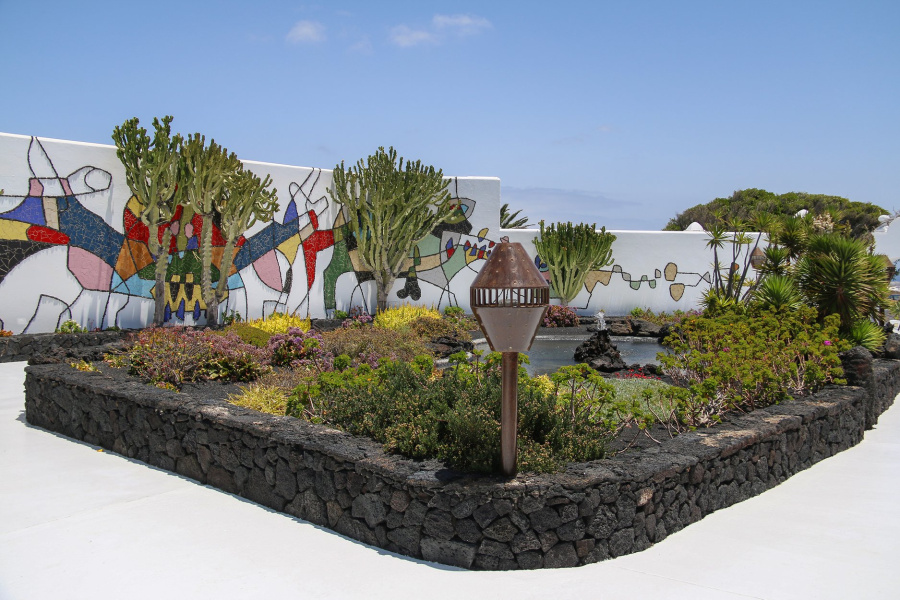


The Legacy of César Manrique
César Manrique (1919–1992) was a pivotal figure in the cultural and architectural landscape of Lanzarote, one of the Canary Islands. An artist, architect, and environmentalist, Manrique's legacy is deeply intertwined with the island’s identity, as he championed a harmonious relationship between nature and human development. His work not only transformed Lanzarote but also inspired a broader movement towards sustainable development and environmental consciousness in architecture.
César Manrique Early Life and Influences
Born in Arrecife, Lanzarote, Manrique was exposed to the island’s unique volcanic landscape from a young age. He studied fine arts in Madrid, where he was influenced by the avant-garde movements of the time. His experiences abroad, particularly in the United States, shaped his appreciation for modern art and architecture, yet it was the raw beauty of Lanzarote that remained his greatest muse.
César Manrique Artistic Philosophy
Manrique believed that art should integrate with the environment rather than dominate it. His philosophy centered on the idea that architecture should complement the natural landscape, a perspective that informed his designs and artworks. This ethos was particularly vital in Lanzarote, where the volcanic terrain posed both challenges and opportunities for innovative architectural solutions.
César Manrique Key Projects and Attractions
One of Manrique's most significant contributions was the development of various cultural and tourist sites that embraced the island’s natural features. His most famous projects include:
Jameos del Agua
James del Agua, developed from a volcanic cave, showcases César Manrique's ability to blend art with nature. The transformation of the cave into a cultural center features a stunning underground lagoon, a concert hall, and lush gardens. It exemplifies his vision of creating spaces that harmonise with their natural surroundings. It's a must visit spot on the island and home to the native blind albino crabs and kings pool - a swimming pool set against the white terrace surroundings that can only be used by the king of Spain.
Cueva de los Verdes

Another volcanic formation and part of the same lava tunnel as Jameos del Agua, this cave was enhanced by César Manrique to serve as a tourist attraction while preserving its natural integrity. The lighting and pathways he introduced allowed visitors to experience the cave’s beauty without compromising its ecological significance.
Mirador del Río

Sat an impressive 474 metres high on top of the Riscos, overlooking the island of La Graciosa, the Mirador del Rio viewpoint is a striking example of César Manrique’s architectural style. The use of local materials and the incorporation of the surrounding landscape into the design create a seamless connection between the built environment and nature. On a clear day the views from this attraction and breathtaking as you take in the islands and ocean of the Chinijo Archipelago Natural Park.
Fundación César Manrique

Established in his former home, this foundation promotes art, culture, and environmental awareness. The building itself, designed to integrate with the volcanic landscape, serves as a museum and cultural centre, hosting exhibitions that reflect Manrique’s artistic legacy. Known to many as 'Cesar Manrique's House' it's one of the most popular tourist spots on the island today.
César Manrique Environmental Advocacy
César Manrique was a pioneer in promoting environmental conservation long before it became a global movement. His work often emphasized the importance of sustainable development, particularly in tourism. He advocated for responsible tourism that would protect the island’s natural beauty while supporting local economies. His influence is evident in the strict building regulations that were enacted on Lanzarote, which limit high-rise constructions and encourage the use of traditional architectural styles.
César Manrique and his Cultural Impact on Lanzarote
César Manrique’s legacy extends beyond architecture and environmentalism; he was also instrumental in fostering a cultural identity for Lanzarote. By promoting local art, folklore, and traditions, he helped to cultivate a sense of pride among the island’s residents. His commitment to the arts and culture has inspired generations of artists and architects both on the island and beyond.
César Manrique and his opposition to the development of the Gran Hotel in Arrecife
César Manrique strongly opposed the construction of the Gran Hotel in Lanzarote due to his commitment to preserving the island’s unique natural landscape and cultural identity. The proposed hotel, a large-scale development, threatened to disrupt the island’s environment and aesthetic, which Manrique had worked tirelessly to protect.
Manrique used his influence to mobilize public opinion against the Gran Hotel. He organized protests, engaged in public discussions, and raised awareness about the potential consequences of such large-scale developments. His efforts highlighted the importance of preserving Lanzarote’s landscape and advocating for thoughtful, sustainable approaches to tourism.

Ultimately, Manrique’s activism played a significant role in shaping the conversation around development on the island. While the Gran Hotel was constructed in the early 1990s, the opposition it faced underscored the need for regulations that protect Lanzarote's environment and cultural heritage. Manrique's legacy continues to influence policies that prioritise sustainable tourism and environmental conservation in Lanzarote today.
The Global Influence of César Manrique
While Manrique’s work is primarily associated with Lanzarote, his influence has reached a global audience. His ideas about the relationship between architecture and nature resonate with contemporary movements in sustainable architecture and urban planning. Manrique’s approach to design serves as a case study for architects worldwide who seek to create spaces that are environmentally sensitive and culturally meaningful.
Preservation of the legacy of César Manrique
After Manrique’s death in 1992, his legacy continued to be honored through various initiatives aimed at preserving his work and philosophy. The Fundación César Manrique plays a crucial role in this effort, ensuring that his vision of a harmonious coexistence between humanity and nature is upheld. The foundation organizes exhibitions, educational programs, and community events that celebrate his contributions and promote environmental stewardship.
César Manrique faced many challenges and controversies
Despite his significant contributions, Manrique’s legacy has faced challenges. The rapid development of tourism in Lanzarote has raised concerns about environmental degradation and the potential loss of the island’s unique character. While his influence has led to regulations protecting the landscape, the balance between tourism and preservation remains a contentious issue. Discussions about how to maintain Manrique’s vision in the face of increasing commercial pressures are ongoing.

César Manrique's legacy is a testament to the power of art and architecture in shaping cultural identity and promoting environmental awareness. His innovative projects and philosophies continue to inspire architects, artists, and environmentalists worldwide. As we face growing challenges related to sustainability and urbanization, Manrique’s work serves as a reminder of the importance of integrating our built environments with the natural world. The enduring impact of his vision is felt not only in Lanzarote but also in the broader discourse on sustainable development, making him a truly transformative figure in the realms of art, architecture, and environmentalism.
About the author
Mr TravelON is the brand ambassador for TravelON and one of the most watched travel experts in the Canary Islands, with more than 400000 followers across YouTube, TikTok and Facebook. Mr TravelON has worked in tourism for over 25 years with tour operators, excursion suppliers and the local Canary Islands tourism board. He is on the ground in tourist destinations filming content, reviewing tours and talking with holidaymakers every day. His advice comes from real experience and direct contact with the island. As a Travel expert and editor he brings the most up to date travel news.